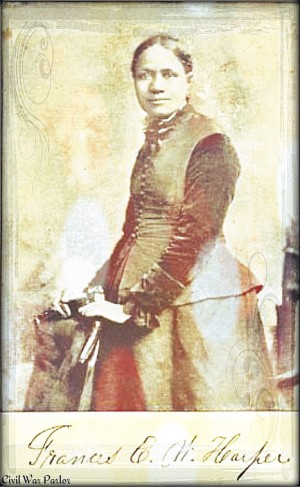Zealous competition among Hoosier cities and towns in the raising of companies for the Hundred Days Service continued. Indianapolis residents and its young men were called upon to push harder and to not let Lafayette, with four full companies raised, or Delphi, which has “raised a full company, an effort which (the capital city) could only equal by raising about two regiments,” “best us.” Stirring speeches were given at well attended ward war meetings, and the committees were appointed to canvas for recruits and “to secure subscriptions to assist those volunteers who have families depending upon them.” For store clerks who volunteered, patriotic businessmen offered “full wages, bonuses, reserving a place until their return, or paying “$2 (2013: $29.39) per week” to their families. Three hundred and seventeen of “the best men in the city” volunteered. By mid-month nearly 6,000 volunteers for hundred day’s service from Terre Haute, Evansville, Lafayette, Richmond, and elsewhere around the state had arrived at Camp Carrington presenting a “scene more like that at Camp Morton after the first call of troops” three years ago. While these new volunteers began their training, a large number of citizens witnessed the departure for the front of five veteran regiments that had been camped in the city.
Over three hundred armed Copperheads from Clay and Putnam counties gathered near Brazil, Indiana at Hanway Cross Roads intent upon breaking up a recruiting meeting. Col. Abel Streight, who was to address the meeting, led the Brazil Home Guards in dispersing the traitorous gangs, and the “citizens of Brazil are greatly obliged to him.”
Ellinger & Foote’s Great Moral Exhibition featuring “the two smallest human beings in existence.” Commodore Foote, “a fine comedian and dancer,” is 26 inches tall, and his sister the Fairy Queen of the West, who “signs and speaks well,” is 21 inches high, along with the Old Continental Vocalists provided six days of entertainment at Masonic Hall for Indianapolis residents. At Metropolitan Hall, Miss Sallie St. Clair appeared in the romantic drama The Gypsy and in the comedy Our Country Cousin. The pews and galleries of the new First Baptist Church were occupied for “a very pleasing and successful” organ concert, that concluded with “the audience rising and joining in the chorus” of the Star Spangled Banner. Mrs. Frances Watkins Harper, a colored lady from Maryland and writer of poetry, gave a lecture, “Mission of the War,” at Dr. W. R. Revels’ African Methodist Church. Her “entertaining and instructive” talk was given before a full house and “a more cogent, forcible and eloquent lecture” seldom has been heard, “especially from a woman.” She ended her remarks “with an earnest appeal for a national recognition of the colored man as a freeman and citizen.”
News reached Indianapolis of a railroad accident near Gallatin, Tennessee killing three and injuring 81 soldiers of the 10th Indiana Cavalry. In correspondence to the Journal, J. P. Culbertson, assistant surgeon, wrote they “were run into by a wood train, smashing up seven cars. The impression is that the collision was a premeditated thing by the guerillas of the vicinity.” A list of the 46th Indiana killed, wounded, and missing in the Battle of Mansfield, Louisiana filled half of a column on the front page of the Journal. The news of the great battles in Virginia as General Grant continued to press Lee back towards Richmond was accompanied by a “fearful list” of the killed and wounded of Indiana regiments” who “bore a conspicuous part in the conflict.” Chaplain Jewell of the 7th Indiana wrote of the “heavy, very heavy” loss sustained in “a great and terrible battle . . . raging in this wilderness region . . . almost incessantly day and night.” The Journal office remained open until 10 o’clock in the evening to post the latest telegraphic report from the Army of the Potomac as it marched on Richmond.
Indianapolis ladies met at Masonic Hall to consider joining a national movement to refuse to buy imported dress goods thereby “lessening of the shipments of gold to Europe” and to “lay aside during the war . . . expensive dresses.” A pledge enrollment book was opened. At Military Hall, the sewing women of the city met for the purpose of creating a Sewing Women’s League to protect and promote their interests. No class of laborers have “benefitted so little by the rise in prices” as the city’s 400 to 500 pants and vests makers. Wages are “so low as scarcely to afford a living.” A seamstress earns about $1 (2013: $14.69) per day for custom work and about 75¢ (2013: $11.02) per day for shop work.
The City Regiment – 132nd Indiana – departed for the seat of war over the Indianapolis & Cincinnati Railroad. The largest gathering of citizens, friends, and relatives of the soldiers ever to watch a regiment leave this city gathered at the depot for sad good-byes. Pride swept the whole city seeing it organized, but so many familiar faces will be missed. By the end of the month, rebel prisoners captured in General Sherman’s Georgia campaign began arriving at Camp Morton, and lists of casualties in the Indiana regiments with the Army of the Tennessee filled newspaper columns.



